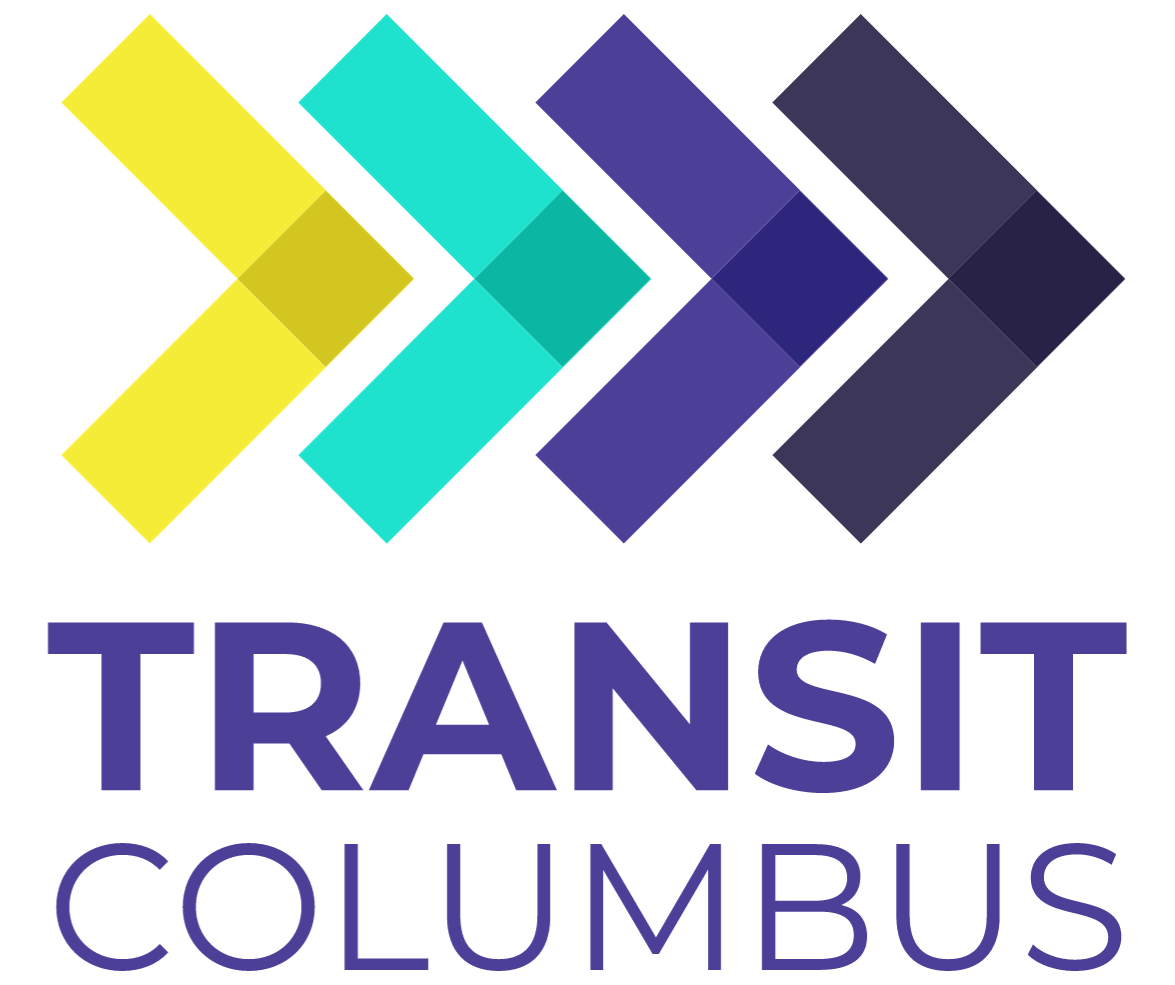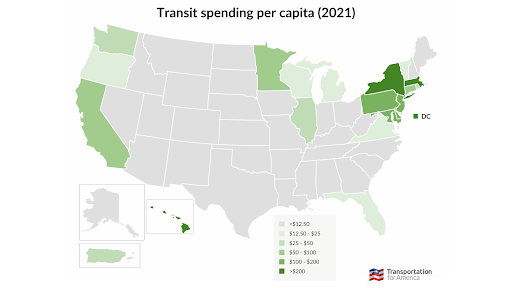Ohio Needs More Funding for Public Transit
A report recently published from Policy Matters Ohio highlights the urgent need for a cleaner, more equitable transit system to reduce Ohio’s economic and environmental costs. The state is currently the 6th largest consumer of transportation energy, 6th in the nation for total vehicle miles traveled, and 5th in the country for interstate size. On the other hand, Ohio ranks 33rd in the nation for public transit use. Chronic underfunding from the state is one of the major factors in low ridership — Ohio invests just $6 per person, far below the national average of $60.
Map depicting statewide spending on transit per person in each state in 2021. Map from Transportation for America.
Chronic underfunding of transit systems leads to less frequency, worse service, and lower ridership, creating a vicious cycle known as the “death spiral”. The lack of funding in addition to urban sprawl creates a bigger reliance on needing an automobile to get to work and elsewhere. A person’s transportation burden, or percent of income they spend on transportation, is much higher for low-income folks and disproportionately high for Black, Hispanic, and American Indians.
Transportation Funding in Ohio
To better understand how state funding fits into funding for transit systems we need to understand how transit systems can be funded. There are a variety of ways that transit agencies can be funded, but the main source is from local taxes and funding. As the report points out, “Around 70% of Ohio’s public transit funding is from local taxes, including sales, property, and income tax. With additional contributions from local governments, local funding mechanisms account for more than 75% of transit funding in Ohio.” This fall, Columbus and central Ohio residents will vote on a proposal to increase transit funding through a sales tax. If passed, the COTA levy would bring increased service, multiple bus rapid transit lines, and over 500 miles of trails and sidewalks to the region. However, as the report states, having such a high percentage of funding through local taxes can make the system susceptible to economic downturns and in danger of decreased funding and potential service cuts.
Hope on the Horizon?
There is a bit of hope from the statehouse. Funding for public transit was a mere $7.36 million in 2018 and 2019 and has increased since then, yet still not enough to keep up with other states.
On average, almost 14% of public transportation funding comes from the state budget. Ohio is relatively better at this measure but still far behind ODOT’s recommendation for at least 10% by the year 2025 (Editor’s note: Yes, you read that correctly. The Ohio Department of Transportation is recommending the statehouse more than double its current funding level for public transit.)
How does public transportation funding compare to the rest of the transportation budget in the state? At less than 2% of the state transportation budget I’d say “not good”.
It’s so bad that individual road projects outrank spending in the General Revenue Fund (GRF) on public transit. From the Policy Matters Ohio report: “In July of 2023, Governor DeWine and ODOT announced another $90 million investment to improve roadways and intersections around Intel’s construction sites in Delaware, Franklin, and Licking counties — almost $16 million more than GRF funding for public transit in the 2024-25 transportation budget.”
A Path Forward
While the current funding for Ohio’s public transportation isn’t ideal, there are opportunities to change that. The upcoming vote in Columbus offers hope for local transit improvements, and recent state budgets show that public transportation is becoming more of a priority. As the next budget cycle approaches, Ohio’s legislature has a chance to create a more inclusive transit system, connect communities, and help the state transition to a cleaner, more sustainable future.



